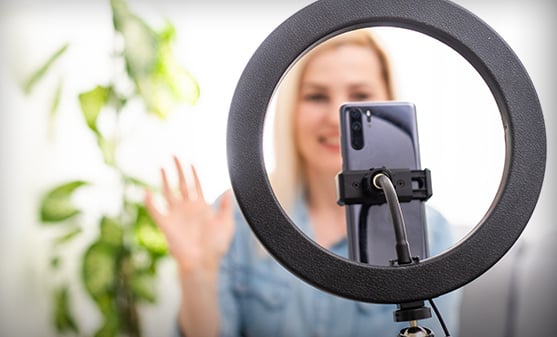The Rise of the Micro-Influencer
A case study of a successful campaign

In a previous blog post, Sponsored Content: Three Things You Need to Know About Influencer Marketing, we introduced influencer marketing – when it works, why it doesn’t always work, and how to explore the tactic with cautious optimism. Look back at that post for a refresher on influencer categories and definitions, the limits to influencer benefits, and tips for finding the right partner.
In this post we’re going to focus specifically on the big world of micro influencers. The name itself may sound contradictory. After all, isn’t bigger better when it comes to achieving greater influence? Not exactly. Macro influencers – those with anywhere from hundreds of thousands to millions of followers – can be effective for brands that simply want to generate awareness. But campaigns designed to change minds, educate or increase engagement may require partners with more personalized content and niche communities.
MISSED OPPORTUNITIES WITH MACRO INFLUENCERS
It can be tempting for brands to invest in the most well-known influencer partners they can afford, but these relationships don’t promise long-term ROI. We saw prime examples of this at the 2023 Farm Progress Show.
As we walked the grounds, we saw brands enlisting YouTube agriculture influencers to generate quick buzz and drive booth traffic and photo opportunities. But that’s where the engagement ended. Most failed to capture data and customer insights from the captive audience, and some influencer partners had little relevance to the products they represented. The brands that engaged macro influencers certainly achieved more media mentions, but likely drove little change in perception among their target audience.
ENTER: MICRO INFLUENCERS
The benefits of micro-influencers, who have fewer than 5,000 or 100,000 followers depending on the definition, are twofold: The Forbes Technology Council credits their authenticity, relatability and credibility, and their ability to be engaged within smaller budgets. Cision adds that micro influencers’ channels are often “followed” by other influential people and generate greater engagement than their macro counterparts.

OUR EXPERIENCE WITH MICRO INFLUENCERS
Last year our clients Indiana Soybean Alliance and Indiana Corn Marketing Council asked for our support connecting sustainability-driven consumers ages 18-34 to their farmer neighbors. We knew conversations about food safety, preserving the land, and community engagement would require a level of trust and local relevance, so we engaged a team of micro-influencers from Indiana.
The majority of our partners participated in on-site farm visits to learn about local agriculture practices. Each captured authentic content that fit the production style their audiences know and trust. We leveraged paid social media ads to bring their social and blog content to a larger segment of our target audience. With a modest media budget and 2.5 months in market, we more than doubled our awareness goals and drove more than 10,000 site visits, with a 9.48% average engagement rate.
In addition to boosted posts, our influencer partners’ organic posts were positively received by their audiences, a good sign that we had achieved meaningful engagement with the target audience. Engagement highlights included the following comments on influencer posts:
- “Soooo happy to see thriving Indiana farming communities using sustainable agricultural practices 😍💚this all looks amazing; I can’t wait to come visit!!"
- “Okay I love this feature! Thank you for featuring our local farmers! So important and so cool!”
- “Wonderful post! I don't think people understand what goes into and along with farming! My hubs is a farmer.”
Our top-performing influencer content posts were Reels featuring a soy-based recipe from a registered dietitian and a farm visit from a hyper-local content creator.
What’s Stopping You?
So why aren’t all marketers utilizing this efficient and effective tactic? We have a few hypotheses:
- Knowledge: Flashy macro and mega influencers tend to generate the most buzz in mainstream media and within social circles. Though micro-influencers are proving successful behind the scenes, simply put, they don’t get as much free press. It takes more digging to uncover their success stories.
- Time: Micro-influencers often work independently without representation from larger agencies. Searching and vetting potential partners takes a significant amount of leg work, which can only be achieved through the investment of time.
- Bandwidth: Micro-influencers have developed authentic communities with their followers. Their audiences expect genuine, personalized experiences and insights. Managing individual on-site or product experiences for each influencer partner requires significant time for communication and coordination.
That’s where we come in. Our integrated team of content strategists, creatives and media specialists work together to ensure influencer marketing isn’t executed as a standalone tactic, but as a strategic component of an effective campaign. We apply industry best practices and our own firsthand experience and manage the legwork of influencer research, vetting, contracting and campaign execution for our clients so they can focus on the big picture.
Need help with an influencer campaign? We can help. Let us know by contacting us today.

